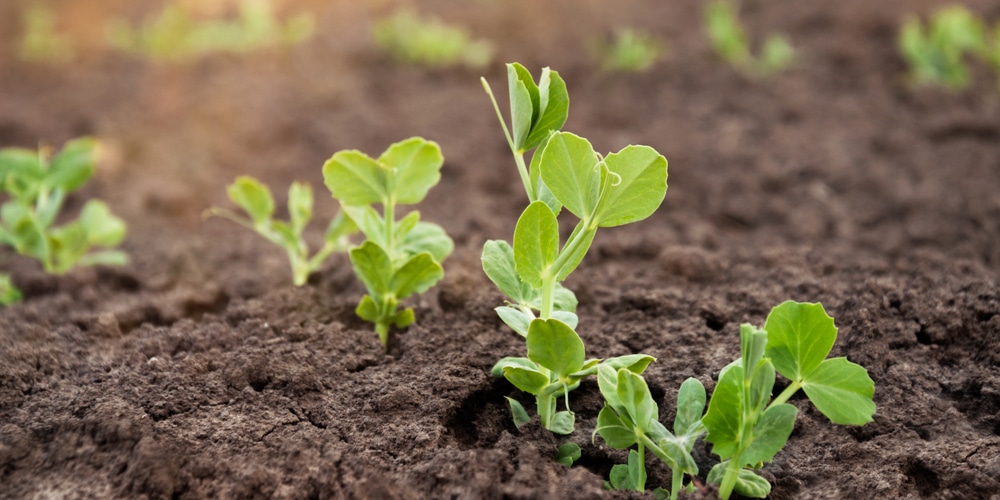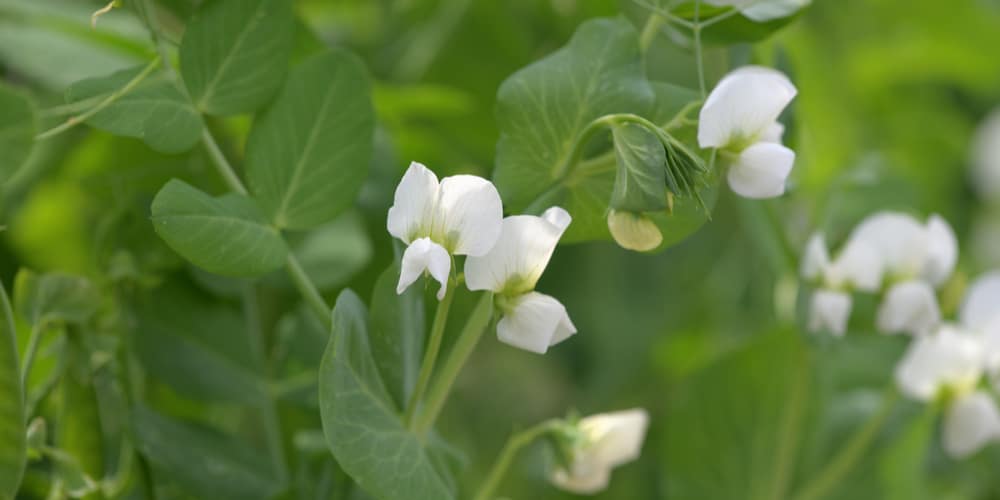The pea is a legume or bean-like plant that grows in the pod of its seed and has edible leaves. The peas are grown commercially for their edible pods, which may be eaten as fresh vegetables, dried, frozen, canned, or used to make vegetable protein products such as flour, meal, and oil. Peas are also grown for their flowers which can be used in floral arrangements. This plant is an annual herbaceous flowering plant with woody roots growing from a taproot. It is native to Europe but has been widely cultivated since ancient times.
Pea Plant Growth Stages
It is important to understand how pea plants grow and develop over time to produce high-quality crops. Many different types of growth stages occur during the life cycle. This article will review the Pea Plant Growth Stages: germination, seedling establishment, vegetative growth, reproductive development, and senescence. We will discuss each stage in detail and provide information on when they typically appear in the life cycle of the pea plant.
Germination
Germination occurs when pea seeds absorb water and begin to sprout. Seeds contain a small number of nutrients and moisture that allow them to start growing after being planted into soil. When seeds are placed in moist soil, they absorb water through capillary action. As the seed absorbs water, the embryo inside begins to swell and form root hairs. Root hairs help the seed absorb more water and nutrients.
Once the seedlings have developed enough roots, they can use the stored energy in the cotyledons (the first true leaves) to photosynthesize food for themselves. Within 24 hours, the radicle (first root hair) extends outwards from the seed and forms a primary root. The primary root then sends out secondary roots and eventually develops into a taproot. After about two weeks, the stem elongates, and leaf buds appear. The benefit of this stage is that the plant now has access to both light and nutrients.
Seedling Establishment
After germination, the seedling needs to establish itself in the soil before continuing to grow. A seedling shows itself by absorbing water and nutrients from the soil. If there is not enough water available, the seedling cannot survive. Nutrients are needed to maintain healthy roots and stems. Without adequate nutrition, the seedling cannot grow properly. Water is also required so that the seedling can take up nutrients and grow.
Some seeds may die if the soil is too dry because they do not have enough moisture to keep them alive. Some seeds may even rot if they are exposed to too much heat. Also, some seeds may not germinate at all if they are buried deep in the ground. Soil conditions must be just right for a seed to germinate successfully. There are some soil preparation techniques that you can use to improve your chances of having successful germination. You should always test your soil prior to planting.
Vegetative Growth
The next phase of Pea Plant Growth is called vegetative growth. During this stage, the plant continues to grow and expand its size. This is usually the longest part of the plant’s life cycle. The following characteristics characterize vegetative growth:
• Pea plants develop new leaves.
During this stage, the plant produces many new leaves. These leaves will provide shade and protect the plant during hot weather or drought conditions. Leaves also serve as an important source of food. Commonly known as “foliage,” leaves consist of two parts: the blade and the petiole. The blade is the main portion of the leaf. It contains most of the nutrients and chlorophyll. The petiole connects the blade to the stem.
• The plant grows taller.
During this stage, the plant grows taller and larger than previously. The plant increases in height due to cell division. Cell division allows the plant to produce more cells and increase in size. You will notice that the leaves on the top of the plant become smaller and thinner as the plant gets older. As the plant ages, the lower leaves get bigger and thicker.
• The plant becomes bushy.
As the plant matures, it tends to become bushy. Bushing refers to the fact that the plant branches out and spreads across the ground’s surface. In some cases, the plant may spread out over several feet.
• The plant begins to flower.
Once the plant reaches maturity, it starts producing flowers. Flowers are reproductive structures that contain pollen and nectar. Pollen is the male sex organ of flowering plants. It contains tiny grains used to fertilize female parts of other plants. Nectar is a sweet liquid produced by flowers. It provides nourishment for insects and birds.
Reproductive development
After the plant has reached maturity, it enters the reproductive stage. During this stage, most of the energy from the sun goes into reproduction instead of growth. Plants undergo changes that allow them to reproduce. These changes include:
• The formation of fruits and pods.
During this stage of growth, the plant produces fruits and pods. Fruits are the mature form of the ovary. They contain seeds and often ripen after being pollinated. Pods are similar to fruits but contain only one seed. Pods are commonly referred to as beans.
• The production of seeds.
Seeds are small, round bodies containing the genetic material of the plant. When the plant dies, the seeds fall to the ground and grow into new plants. Generally, peas are self-pollinating. However, there are certain varieties of peas that require cross-pollination. Cross-pollination occurs when pollen from another variety of peas is transferred onto the stigma (the part of the pistil that receives pollen) of another variety of peas. Once the pollen is placed on the stigma, the pistil can easily absorb it.
• The production and dispersal of pollen.
During this stage, the male organs of the plant begin to produce pollen. Pollination occurs when pollen lands on another plant’s stigma (female). After pollination, the female part of the plant releases pollen. This process continues until all of the pollen has been released.
Senescence
The last stage of life for a plant is senescence. Senescence is the natural aging process of a plant. During this stage, plants lose their ability to grow and reproduce. Eventually, they die. Senescence usually happens at different times depending on the species of plant. Some plants go through senescence quickly, while others take much longer.
Pea Plant Growth Stages: Bottom line
Pea plants have many stages of growth. Each stage has its purpose. So, if you want to know how to grow pea plants, you need to learn about each growth stage. By learning about these stages, you will understand what your plants need to grow well.
You may also be interested in: Watermelon growth stages


